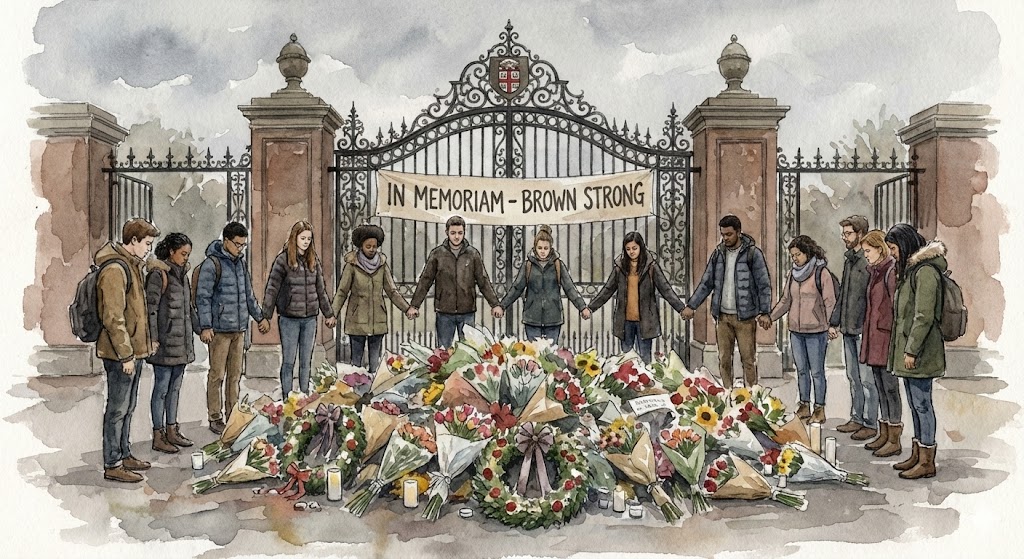It’s hard to argue that Denver Public Schools has ever had a golden age.
Too many students cannot and never have been able to read, write or do math at anything approaching grade level. Achievement gaps between more affluent, white students and lower-income students and students of color remain enormous.
And yet between 2005 and 2019, under the leadership of first Michael Bennet and then Tom Boasberg, DPS chipped away at these inequities, making real if incremental progress that new research shows was unprecedented in its scale and scope, at least by urban public education standards.
Last week, just a couple of days after a data-rich research report was released by the University of Colorado at Denver’s Center for Education Policy Analysis extolling Denver’s reforms, Bennet and Boasberg released a 17-page white paper giving their version of why their reforms worked. The two former superintendents then held a virtual news conference last Friday to elaborate further on their thoughts.
As political winds shifted over the past five years, critics, including board and district leadership, have pummeled Bennet and Boasberg, calling them, among other things, white supremacists and enablers of racist and oppressive systems. Both men are politically astute, and have chosen not to address those insults directly.
I view this white paper as their oblique way of refuting those unjust and hyperbolic critiques.
The UCD report, authored by Parker Baxter, is summarized well in this article by CPR’s Jenny Brundin. Here are a few key paragraphs:
The study finds that compared to similar peers in surrounding school districts, DPS students who experienced two years of reform received the equivalent of at least six months and as much as two years of additional schooling. Everyone improved, not just students who experienced a specific reform strategy like leaving a closed school…
Students who were in DPS for five years of reforms received the equivalent of between two and three years of additional schooling.
Baxter noted that existing achievement gaps between racial and ethnic groups stayed the same, but everyone benefited, not just wealthier students and not all to the same degree…
Strategy replaced by incoherence
In their white paper, Bennet and Boasberg attribute much of the success they oversaw to their focus on three priorities: Building public will for major change; focusing on developing more equitable systems; and attracting and retaining top talent to all levels of DPS.

Not mentioned in the white paper or during the news conference is the glaring fact that the current DPS regime and school boards that took power just after Boasberg’s departure have been dismantling key elements of the reforms that led to these meaningful successes.
In their place they have assembled an incoherent jumble of pseudo-policies, driven by ideology rather than best practices. Student achievement has stagnated in some cases and begun to backslide in others, though it still remains markedly better than before Bennet and Boasberg came on the scene.
Bennet, now a U.S. senator, and Boasberg, who runs a private school in Singapore, have always been savvy political actors, and clearly don’t want to give the appearance of throwing shade on current policies, practices, and players in DPS. They have not come out publicly to criticize the current district leadership for dismantling key components of their carefully-crafted strategy.
That’s unfortunate. It’s asking too much of people who don’t live and breathe DPS or education policy to connect the dots and draw inferences about current practices obliquely hinted at in the white paper. I tried, during the news conference, to draw out Bennet and Boasberg on these issues, with limited success.
Killing the SPF
One Bennet-Boasberg initiative discontinued by DPS in recent years is a district-specific Student Performance Framework, a multi-faceted, data-driven examination of every Denver school. It was a cornerstone of the Bennet-Boasberg equity focus. In their white paper they wrote:
To ensure that schools were not held to different standards, we created one of the first school performance frameworks in the country. This framework emphasized how much academic progress our students made, regardless of the academic level at which they started the year.
This meant that every school, whether traditional or charter, had to be accountable to parents and the community in the same way. To underscore that student growth matters, it was vital for the district to measure and be transparent with those results.
The school performance framework meant there were no favorites or hiding of data. All schools, district- run or charter, were accountable to a common set of student growth expectations.
Why did the DPS board kill the SPF in 2020? Former board member Scott Baldermann said at the time that parents could “weaponize the information” and foster competition among schools. Other board members also said presenting data led to comparisons, which was demoralizing for some schools.

DPS now uses the Colorado Department of Education’s SPF, which is less data-rich and more narrowly focused than the district’s defunct SPF. In other words, it was a dumb decision, not driven by what was best for kids, but rather on what made grown-ups feel OK about the schools where they worked or their kids attended..
When I asked Bennet and Boasberg last week about the death of the Denver SPF, Bennet said:
“A critical aspect to empowering the people in our schools to be able to make decisions in the interests of kids was being able to work together on a shared understanding of what the facts were about what our kids were facing…
“When a district strategy is to obscure information and to obscure budgets and to obscure student data, it’s likely that the last thing this will ever do is lead to beneficial outcomes for kids or empower teachers or principals.”
An attack on student-based budgeting
In the white paper, Bennet and Boasberg also touted how they redirected money to schools based on the needs of the students in those schools, employing what is known in the education world as student-based budgeting:
We replaced the district’s opaque funding formula, which advantaged wealthier students to the disadvantage of poorer students, with a budget that funneled more resources to students with greater disadvantage. Under our new student-based budgeting model, dollars followed students to whichever school they attended. Each student in poverty, learning English, with disabilities, and/or at risk of dropping out was allocated significantly more dollars than students without these needs.
This meant a significant redistribution of funds from schools in our wealthier areas to those serving higher numbers of students in poverty.
While the DPS board has not yet dismantled this funding system, it has come under sustained attack by several board members, who have somehow come to the bizarre belief that budgeting based on student need is racist and disadvantages low-income kids and kids of color. Let’s hope it survives until a reasonable majority rules the board.
Another issue on which I wanted to probe the former superintendents is the conventional wisdom in the upper echelons of current DPS leadership that closing schools for sustained poor performance and moving kids to new and better schools is damaging to those kids.
In fact, in the upcoming school closure decisions, the board has voted not to use school performance as part of the criteria. This flies in the face of the Bennet-Boasberg experience. As Brundin wrote in her article about Baxter’s study:
A second analysis evaluated the impact of three specific reform strategies – school closures, new schools, or district-led turnaround.
During the study period, the district opened 65 new schools, and closed, replaced, and restarted 35 others. It found that DPS students who left a closed school and then attended a new school opened during DPS reform saw the largest positive effects in math overall, and performed the same in literacy.
Students who stayed in low-performing schools that were ordered to “turnaround” – often teachers lost their jobs while new teachers embarked upon district-led interventions using federal dollars – those students ended up performing worse.
This means that the strategy of closing schools that were serving students poorly and opening new schools had a positive effect on kids. Trying to turn around failing schools by replacing staff and changing programs was a failure.
Revisionist history on Manual High School
The poster-child for unpopular school closures was Bennet’s decision in 2006 to close Manual High School, the victim of a series of failed school reform efforts that was serving kids dismally. Bennet closed the school for a year and opened it a year later with a new leader, staff, and program. The school continued to struggle even after the closure, and only recently has begun to show some signs of real improvement.
Closing schools is never popular, yet at the time, Bennet’s decision was clearly the right one. But revisionist history has taken hold. Last year, DPS issued a formal apology to students affected by the closure, and gave them Manual diplomas as a consolation prize long after the fact.
“We can never fully repair the pain that was caused. We learn from it and we grow,” Superintendent Alex Marrero told 10 students who received diplomas.
I asked Bennet about this revisionist history, and how he views the closure decision in retrospect. He gave a long answer. It’s worth posting here in full:
“We have heard anecdotal views on the results of Manual’s closure. I’ve certainly met people who were at Manual when I closed it, who – to this day – think it was the worst decision anyone could make. I have also met people who believe the closure made a profoundly positive difference in their lives…
It’s not true that no one ever apologized to the kids at Manual. I was there night after night apologizing to them for the situation they had been left in by a district unwilling to make decisions to advance their education, a district willing to maroon them in a school that no wealthy or middle-class child would ever be allowed to suffer.
I believe that poor children all across the country should receive an apology from the United States of America for the fact that today they are forced to attend schools that no one with any means would ever send their kids. I think about it every day on the Senate floor. I think about all the kids in America, all the kids in Colorado, and all the kids in Denver that every day show up to a school that is not worthy of them and the aspirations they have for themselves.
And yet, they are willing to push on their school’s front door to get an education. Every day they do that is an act of patriotism. It should inspire us to build far better schools than the ones we have accepted for our kids and an economy that helps propel our kids and their families in ways that it does not today.”
I didn’t agree with everything Bennet and Boasberg did during their reigns. Their white paper contains elements of not fully warranted self-congratulation. But I would never fault them for their intentions, which were always focused on moving the needle for the students historically left high and dry by the lumbering bureaucracy that is DPS.
It’s a breath of fresh air listening to these two leaders reflect on their tenure at the helm of the district.
And it stands in stark contrast to the dismal board and administrative leadership that has replaced them, and that has driven DPS into a deep ditch.




